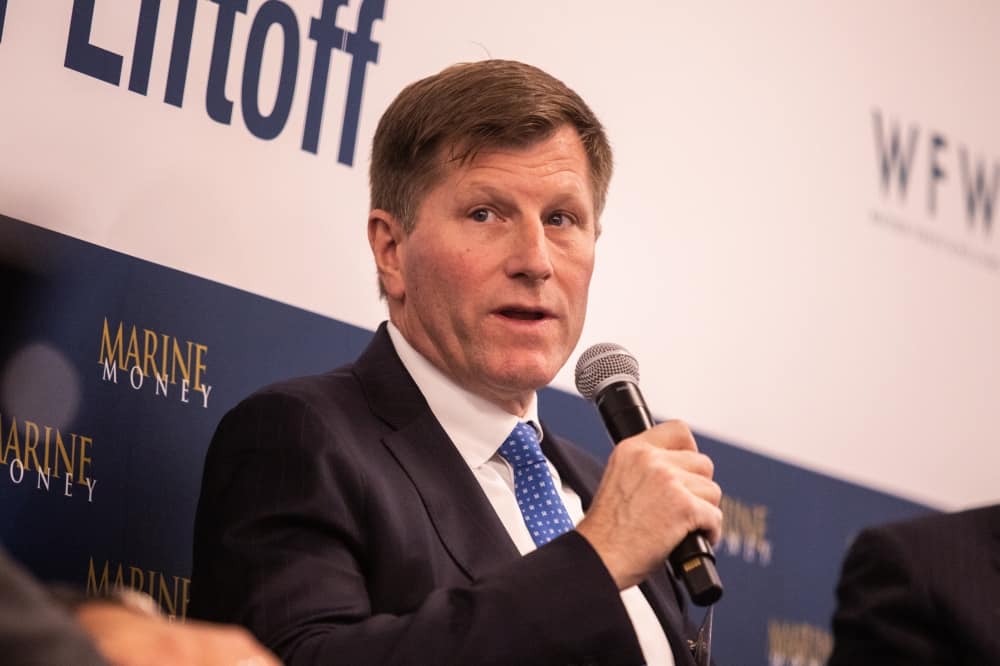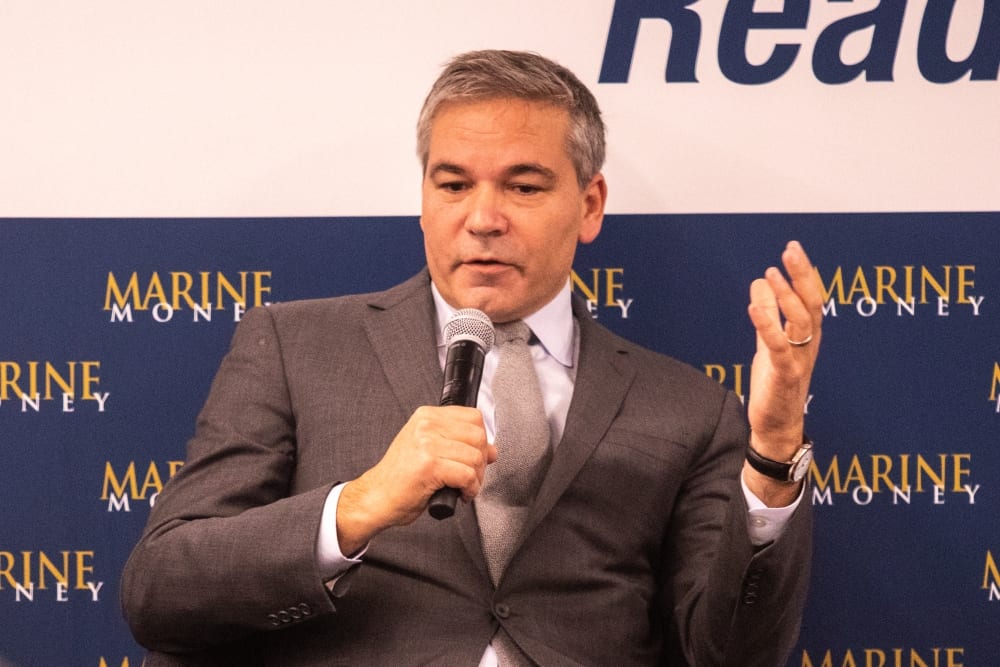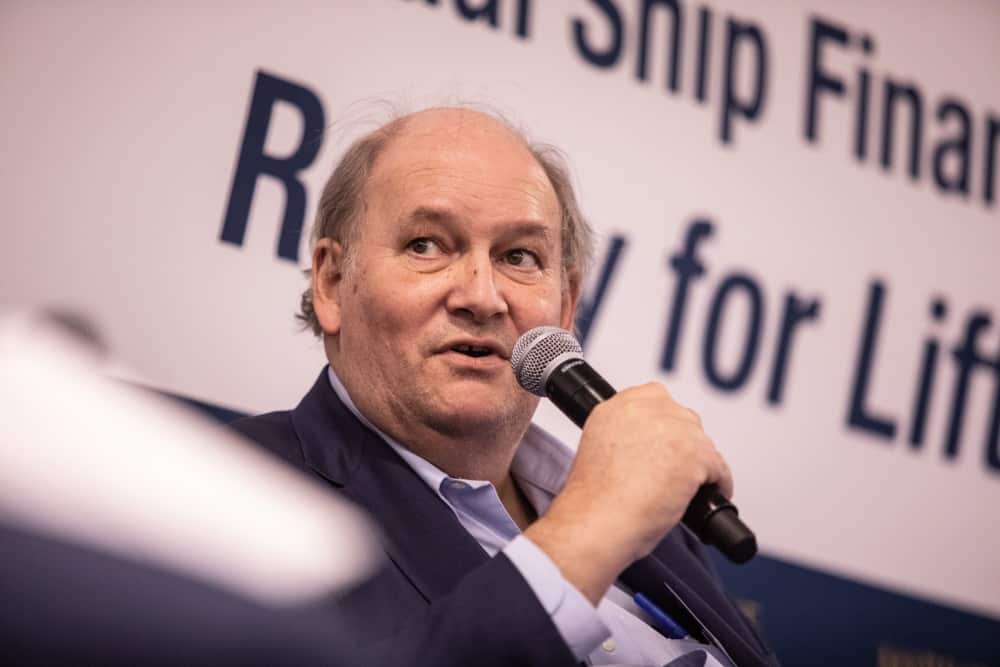If you’re a landlord in a city with escalating housing demand — think San Francisco — you despise most regulations, but there’s one kind you absolutely adore: restrictions on development that curb construction of new buildings. The harder to create new housing, the higher your rental income.
The same logic applies in bulk ocean shipping — the non-regularly scheduled transport of crude oil, refined products, dry bulk and liquefied gas.
The move to cut carbon intensity and greenhouse gas (GHG) emissions is constraining the creation of new vessel capacity. Unless there’s a global economic collapse and a slide in commodity demand, owners with tanker and dry bulk ships appear poised to profit from the environmental, social and governance (ESG) movement.
To put it another way, it looks like the transport of bulk commodities could become considerably more expensive in the future.
ESG and the reduction of carbon emissions took center stage at the Marine Money forum in New York on Nov. 13. Shipping executives sounded genuine in their commitment to becoming “greener,” but at the same time, the underlying takeaway was that ESG and carbon reduction should be good for the bottom lines.
Financing constraints
The first issue holding back new capacity is constraints on both the debt and equity financing. With the exception of a few months in 2009 when it appeared the entire global financial system was about to implode, there has never been a time in the modern era when less money has been available for newbuildings.
ESG funds are shunning shipping stocks, making it less likely that listed owners can sell shares to fund newbuildings. On the private-equity side, investment is likewise scarce due to ESG pressures on limited partners.
“There is such institutional pushback now on investing in carbon,” said Bob Burke, CEO of privately held Ridgebury Tankers. “If you sit down with an investor and say, ‘I want to invest in a vehicle that moves 2 million barrels of carbon every day and will burn a whole bunch more over the next 20 years,’ that’s a tough conversation.”

Bank financing is also harder to come by, due to European banking restrictions under the Basel protocols as well as global ESG pressures. In June, shipping banks handling around 20% of the industry’s senior-debt needs signed the “Poseidon Principles,” under which they will benchmark loan portfolio carbon intensities versus the targeted reduction trajectory endorsed by the International Maritime Organization (IMO).
Asked by the panel moderator why banks should focus on ESG and not just profit, DNB Bank Global Head of Shipping Christos Tsakonas replied, “First, our shareholders care, and second, the young people we are recruiting in the bank care. The wave [of change] is coming and we have to adapt. There’s no sign on the wall at DNB that says we have to keep lending to shipping. We’ll only do so as long as it’s profitable and as long as it adheres to the principles of our shareholders and our staff.”
Newbuild design uncertainty
Constraints on equity and debt financing of newbuildings are enough by themselves to boost market prospects. But an even bigger potential upside driver is confusion over newbuilding designs. Neither owners nor lenders know which new ship designs will meet yet-to-be-determined carbon regulations, given the IMO’s target to cut shipping’s carbon intensity by at least 40% from 2008 levels by 2030 and to reduce its GHG emissions by 50% by 2050.
If newbuildings are built to use a fuel that does not meet the future regulations, those assets will be obsolete far before the end of their 20-year depreciation. Technological obsolescence risk for newbuilding orders has never been as high as it is today.
According to Burke, “Investors have always asked us: ‘Is there any technological obsolescence risk in your industry?’ For like, forever, the answer was: ‘No, it’s a ship. It moves.’ But now there is.”
“The blessing of this whole situation we’re in right now is that people are holding off on ordering,” said Anders Redigh Karlsen, senior shipping analyst at Danske Bank. “If you buy a new ship, it takes two years until delivery and it will last 20-30 years, so you need to have some kind of ‘future-proofing.’ Nobody wants to order the last one of the old ships and they really don’t want version 1.0 of the new ship either.”

“I think that LPG [liquefied petroleum gas] and LNG [liquefied natural gas] will be an interim solution [as fuel],” said Ted Young, chief financial officer of Dorian LPG (NYSE: LPG). “But the long-term future is probably hydrogen or ammonia as fuel, or something else, so the question is: When is the next hydrogen ship or ammonia-powered ship actually going to be available?”
“Why do you think the yards are full of LNG newbuildings right now?” asked Jeff Pribor, CFO of International Seaways (NYSE: INSW). “It’s because they don’t have the fueling problem. They can just reach into the back trunk and get some fuel,” he said, citing the ability of LNG carriers to use their own cargo for propulsion fuel and obtain a lower carbon intensity versus the use of marine fuel oil.
“If you look at the Chinese yards, all of them are now developing new designs for LNG-propelled vessels,” said Christos Begleris, co-CFO of Star Bulkers (NASDAQ: SBLK). “But is LNG the right solution? Will LNG ships be able to cope with new regulations? Hopefully in 2020, we’ll be able to get more guidance [from the IMO], but from a shipowner’s perspective, right now is definitely not the right time to be ordering a ship.”
“At some point there will be a new viable alternative out there,” said Gary Vogel, CEO of Eagle Bulk (NASDAQ: EGLE). Until that alternative is identified, he said, the design uncertainty will inhibit new orders. “And as long as there’s that inhibitor to ordering news ships, it will be a positive thing — and we shouldn’t push back on it,” he said.
Robert Bugbee, president of Scorpio Bulkers (NYSE: SALT) and Scorpio Tankers (NYSE: STNG), also sees the current regulatory environment as a profit driver. “There’s no point in fighting county hall. If you’re able to embrace change and go with the future, it will be profitable,” he maintained.

“Look at Shell [NYSE: RDS.A]. You can’t fight this when the largest product-tanker customer in the world decides to give its trading departments a carbon budget and tells them, ‘Oh, by the way, the following year it’s going to be 10% lower, and 10% lower after that.’ When that happens, you’d better stop worrying about whether it’s right or wrong and just accept that it is — and make the best of it.”
Summing up the current situation from an investor’s perspective, Vance Brown, portfolio manager at William Jones Wealth Management, said, “What really attracts me to this industry is that I anticipate a really powerful shortage of new vessels. There is no consensus on what the new propulsion system will be. That means the banks are not going to finance newbuilds. That leads me to the conclusion that the earnings power and cash-flow-generative capabilities — particularly of the tankers but also in other areas — is being substantially undervalued by Wall Street.” More FreightWaves/American Shipper articles by Greg Miller







